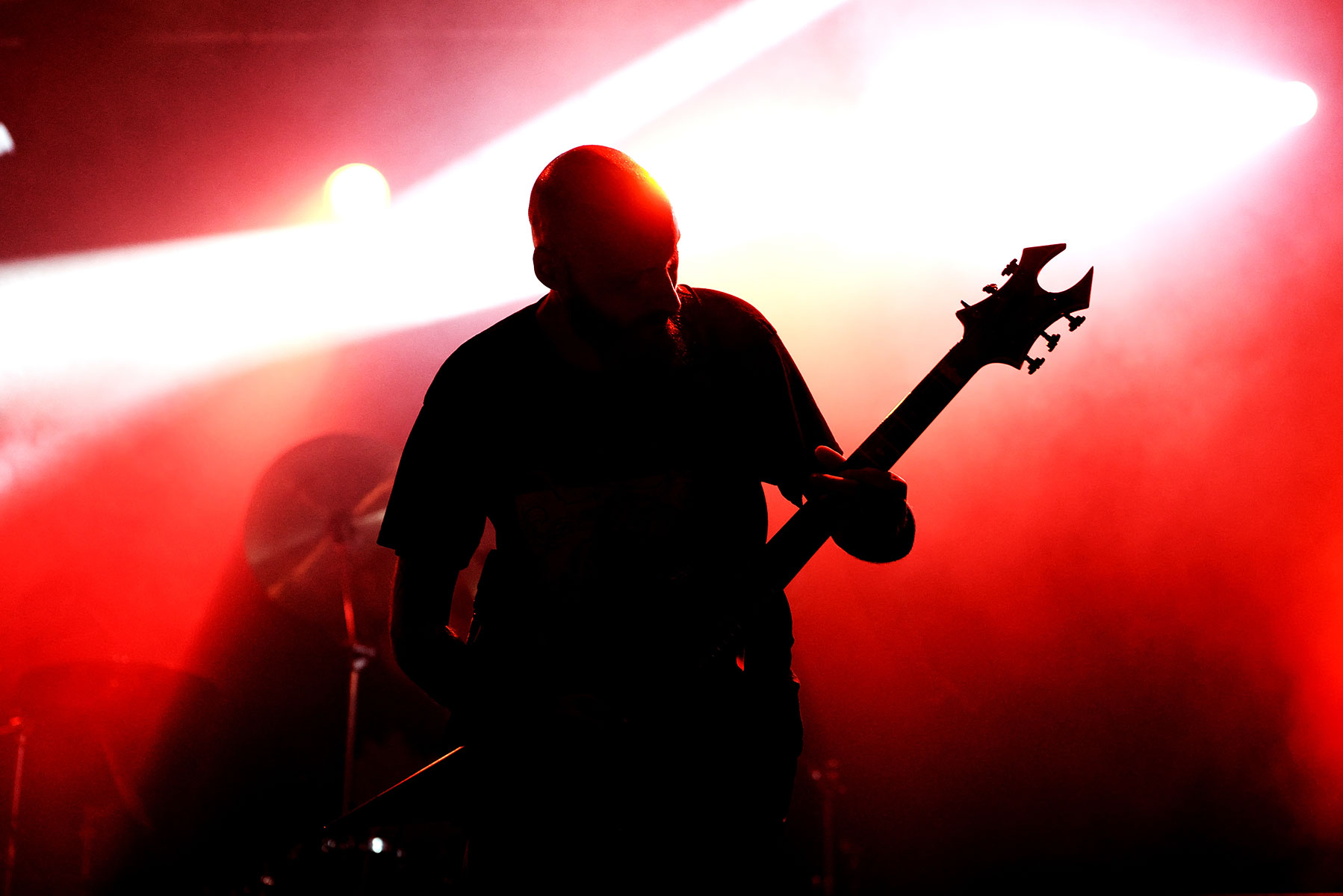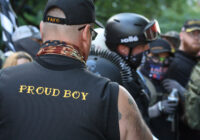There has been an association between the occult, paganism and the extreme right ever since the evolution of the National Socialist German Workers’ Party from the Thule Society. In the last few years, however, commentators are noting the return to prominence of racist occultism and heathenry among the far right and have called for some of these groupuscles, such as the Order of Nine Angles, to be banned. The majority of mainstream liberal heathen groups are similarly concerned about the manner in which their contemporary religion is being appropriated by the extreme right and are organizing to resist.
The Far Right’s Alternative History
What is particularly disturbing is the recognition that many recent violent crimes perpetrated by the extreme right seem to be connected or influenced by such worldviews. Anders Breivik, responsible for bombings and the shooting of 77 people in Norway in 2011, identifies as an Odinist. James Alex Field, arrested for the murder of Heather Heyer in Charlottesville, Virginia, in 2017, marched alongside a flag depicting the black sun, a Nazi symbol drawing directly on Germanic heathen Ariosophic imagery, which in turn had inspired the formation of the Thule Society.
This same black sun emblem appeared on the front and last pages of the manifesto of the Christchurch mass murderer in March 2019. The manifesto ended with the clarion call: “see you in Valhalla.” In the UK, Thomas Mair, who murdered West Yorkshire MP Jo Cox, was reported as being influenced by racist Ariosophic literature too.
Gospel of Hate
The internet, the dark web, online gaming forums and encrypted messaging services are frequently accused of helping to spread this gospel of hate. Thus, some academics, such as Steven Woodbridge, have cautioned of the need to watch the uses of “historical themes, imagery and language” that are used in these forums to promote their particular brand of violent political discourse. One of these potential memes is black metal music and its offshoot, national socialist black metal (NSBM). Indeed, Nicholas Goodrick-Clarke, in “Black Sun: Aryan Cults, Esoteric Nazism, and the Politics of Identity,” states that black metal and its “fascination with the occult, evil, Nazism and Hitler” were a possible motivation behind the 1999 massacre, on Hitler’s birthday, of 12 students and a teacher at Columbine High School in Colorado.
Black metal is also associated with a series of church burnings across Norway in the 1990s by Varg Vikernes, a racist heathen and black metal musician. More recently, it was reported that Holden Matthew, the 21-year-old charged with burning down three black churches in Louisiana, was also influenced by black metal and held racist heathen beliefs. Some of black metal’s aesthetics even appear to have influenced the violent imaginary of the neo-Nazi Atomwaffen Division. Plato may have been correct when he warned “about the interconnectivity of politics and music.”
Black metal is an extreme genre of heavy metal that first emerged in the UK with the band Venom. The subgenre took its name from the title of Venom’s second album, “Black Metal,” released in 1982. It was intended as a rejection of the commercialization of heavy metal as well as a critique of modern secular society. A second wave of the movement, which was more ideological in orientation and often emphasized Satanism or paganism, became infamous for promoting a series of church burnings. It emerged primarily in Norway in the 1990s and is exemplified by such bands as Burzum.
This Norwegian second wave helped to popularize the genre even further and led to the creation of other black metal bands across Europe and the globe. So influential has this genre now become that one commentator said that “black metal has arguably become Norway’s greatest cultural export.”
Karl Spracklin defines black metal as “a form of extreme metal typified by evil sounds and elitist ideologies,” with a number of bands drawing on “nationalist and fascist images and themes.” Its sound is generally characterized by shrieking and growling vocals, disjointed guitar riffs, a frenetic pace and an emphasis on atmosphere, often deliberately created through the implementation of a raw, lo-fi quality of the recording. Many black metal performers tend to adopt pseudonyms and dress in a kind of Kiss-inspired corpse paint. Upside-down crucifixes and medieval weaponry, alongside Satanic and pagan imagery, additionally appear with relative frequency on black metal websites, CD covers and tattoos.
Other common musical and visual leitmotifs include war, death, fantasy, the apocalyptic and the mythological. Norwegian Satanic black metal band Gorgoroth, for example, took the inspiration for its name from a fictional setting in Tolkien’s land of Mordor. Although such motifs might be viewed as deliberately transgressive in order to attract devotees, some have suggested that black metal practitioners also intend the genre to function “as a springboard from which violent actions could logically emerge” with the specific intent of “reclaiming … a pagan heritage.”
National Socialist Black Metal
Defenders of the genre, however, argue that it “is not a unified, monolithic culture” and that accusations of violence are too frequently “fabricated by conservative groups seeking to impose their own moral agendas.” Indeed, bands such as the Rolling Stones and Eagles have been linked erroneously with a Satanic agenda as early as the late 1960s. Cronos of Venom also denies outright any religious affiliations, stating: “We are entertainers first and foremost — if I wanted to be a murderer or a Satanist, I’d do that full time instead of playing songs for a living.”
The genre is notoriously difficult to define, with a litany of subgenre offshoots, including unblack/Christian, depressive suicidal and ambient black metal, to name but a few extreme variants. Black metal followers also argue, in their defense, that the music is primarily mystical, celebrating a romantic and idealized view of the past which is heavy on ritual and critical of secularism. Aron Weaver, of the US black metal and heathen-inspired band Wolves in the Throne Room, describes it “as an artistic movement that is critiquing modernity on a fundamental level, saying that the modern world view is missing something.”
Some contemporary UK black metal bands, such as Winterfylleth, while admitting that their “musical influence … unashamedly borrows from Burzum” and other black metal bands of an extremist predisposition, say that they do “not necessarily” believe the message behind those bands. A number of black metal followers would agree, as Spracklin points out, with many fans making “a distinction between the sound and the ideologies.” There are also heathen black metal bands, such as Norway’s Enslaved, that are avowedly anti-Satanic and anti-fascist.
Some black metal musicians are openly Satanist but reject Nazism. King ov Hell, who played in Gorgoroth, states that “I am totally against every form of flock ideology. Nazism is an ideology of the flock.” There is even a countermovement against Nazism within the black metal music scene, evidenced by the US-based band Neckbeard Deathcamp and its 2018 album, “White Nationalism is for Basement Dwelling Losers.” The latter is a satirical critique the NSBM subgenre, which is avowedly pro-Nazi.
Black Metal Against Racism
While it is important to point out that national socialist black metal remains a minority element within black metal, signs of far-right extremism similarly contaminate related musical genres such as goth, industrial and neofolk. The latter incorporates elements of traditional European folk and reconstructed medieval instruments, exemplified by such bands as Fire, Sol Invictus and Death in June. The latter take their name from the Night of the Long Knives, when Hitler arranged the murder of his rivals in the Sturmabteilung critical of his policies. Nazi imagery, including the death head worn by the SS, is a consistent theme on their album covers, as are such Germanic runes like Algiz and Odal that were appropriated by neo-Nazis into their blood-and-soil ideology.
According to one Death in June fan on Nordic Elite in a post now removed, “European Civilisation … is going down the drain with the jewish/American mulicultural invasion.” But in the neofolk scene, too, there are recently established bands that are explicitly anti-racist and who reach a much larger, liberal audience. The band Heilung, for instance, recently issued a statement on the alleged harassment of a black woman at a performance in New York: “Apparently some people attended our ritual with the idea that Heilung is only for white people … This is not the case. Heilung is for ALL people, regardless of the color of the skin. And we are sorry that this happened at our show. We do not tolerate hate speech and racism.”
The neofolk band Wardruna, the authors of the soundtrack to the History Channel series “Vikings,” has made prominent anti-racist statements. In a blog promoting “antifascist neofolk bands from around the world,” the band’s lead singer, Einar Selvik, states: “It is a very positive effect, that increased interest does not allow the subculture on the extreme right wing to use our history in peace. We have somehow taken our own story back.”
Whilst outright extremism in the neofolk, black metal and related music scenes is not the norm, it is important to address this problem as well as to draw attention to instances in which such prejudice is less explicit. The Manchester-based Winterfylleth may denounce Nazism by labeling it “the first attempt at some kind of tyrannical EU,” but their critique of extremist politics is reserved. Note that they were “not necessarily” believers in national socialism — this is far from outright rejection.
Winterfylleth are overtly nationalistic and “unashamedly Anglo-Saxon in their approach” to their music, expressing a particular concern about a loss of national English identity. Hence their recent turn from black metal to a more lyrical folk black metal style, evidenced by their 2018 song “The Hallowing of Heirdom” with its melancholic refrain, “So who are we now?” Fandom comments on the latter signify an ambiguous range of responses to their politics and new musical direction, from the negative (“its like countryfile meets the druids”), to the more enthusiastic (“Celebrate that you are English… hail Woden”).
Another English pagan metal or folk metal band, Forefather, like Winterfylleth also celebrates its Anglo-Saxon roots. Intriguingly, with these UK bands, a broadly Germanic influence has become explicitly rooted more in specific English heathen blood-and-soil themes, exemplified in songs such as “When Our England Died.” Fan comments tend to praise the greatness of Anglo-Saxon culture and critique other foreign elements.
Beyond the Footnote
Given that not all black metal fans are fascists or Satanists, that many are simply intrigued by the genre’s ability to shock and entertain, and that some are genuinely attracted to the genre for its interest in ancient heathen religion, an even more specific blood-and-soil subgenre emerged from within black metal, the NSBM. National socialist black metal aimed to specifically distinguish its politics and religiosity much more clearly than black metal. It mixes extreme-right racism with paganism, is explicit in its rejection of Judaism, Christianity and Islam, and was very much influenced in its development by the actions of Varg Vikernes. It is also violent, exemplified by the German NSBM band Absurd and their killing of a 15-year-old boy, which they also then referenced on the cover of their 1995 album, “Thuringian Pagan Madness.”
According to Benjamin Hedge Olson, NSBM “reskins the classical fascist ideological elements and combines them with racist and ethnic Paganism.” Critics state that NSMB is deliberately being utilized “as a vehicle to spread hate and radicalize nominally apolitical metal fans.” While many of these NSBM bands appear to be primarily Ukrainian and Scandinavian, the subgenre has become global. According to Celan Brill-Voelkle, “When the keywords ‘national socialism’ are searched in ‘the metal archives’, there are an astounding 774 results of active bands worldwide.”
Ian Stuart Donaldson, former lead singer of the English Nazi rock band Skrewdriver, once stated that “A pamphlet is read only once, but a song is learnt by heart and repeated a thousand times.” Given their global reach and violent messaging, NSBM and other extremist elements within black metal can be seen to promote “paganism and Nordic folk myths … far more effectively than any number of meetings and marches could.” While others have commented on the way in which Christian nationalists are trying to infiltrate and influence mainstream Christian groups “in order to pull Christians to the far right,” there is an urgent need to monitor more closely a similar development within heathenry.
The black metal genre, alongside the existence of extremist racist heathen groups such as the O9A, is interesting for another theoretical reason too. It reinforces the conclusion made by Graham Macklin more than 15 years ago that if scholars of the far right in the UK look beyond a traditional narrow political lens, they will see that a study of fascism in Britain, given its wide cultural influence, deserves more than a mere epilogue or footnote in the history books.
*[Fair Observer is a media partner of the Centre for Analysis of the Radical Right.]
The views expressed in this article are the author’s own and do not necessarily reflect Fair Observer’s editorial policy.
Support Fair Observer
We rely on your support for our independence, diversity and quality.
For more than 10 years, Fair Observer has been free, fair and independent. No billionaire owns us, no advertisers control us. We are a reader-supported nonprofit. Unlike many other publications, we keep our content free for readers regardless of where they live or whether they can afford to pay. We have no paywalls and no ads.
In the post-truth era of fake news, echo chambers and filter bubbles, we publish a plurality of perspectives from around the world. Anyone can publish with us, but everyone goes through a rigorous editorial process. So, you get fact-checked, well-reasoned content instead of noise.
We publish 2,500+ voices from 90+ countries. We also conduct education and training programs
on subjects ranging from digital media and journalism to writing and critical thinking. This
doesn’t come cheap. Servers, editors, trainers and web developers cost
money.
Please consider supporting us on a regular basis as a recurring donor or a
sustaining member.
Will you support FO’s journalism?
We rely on your support for our independence, diversity and quality.







